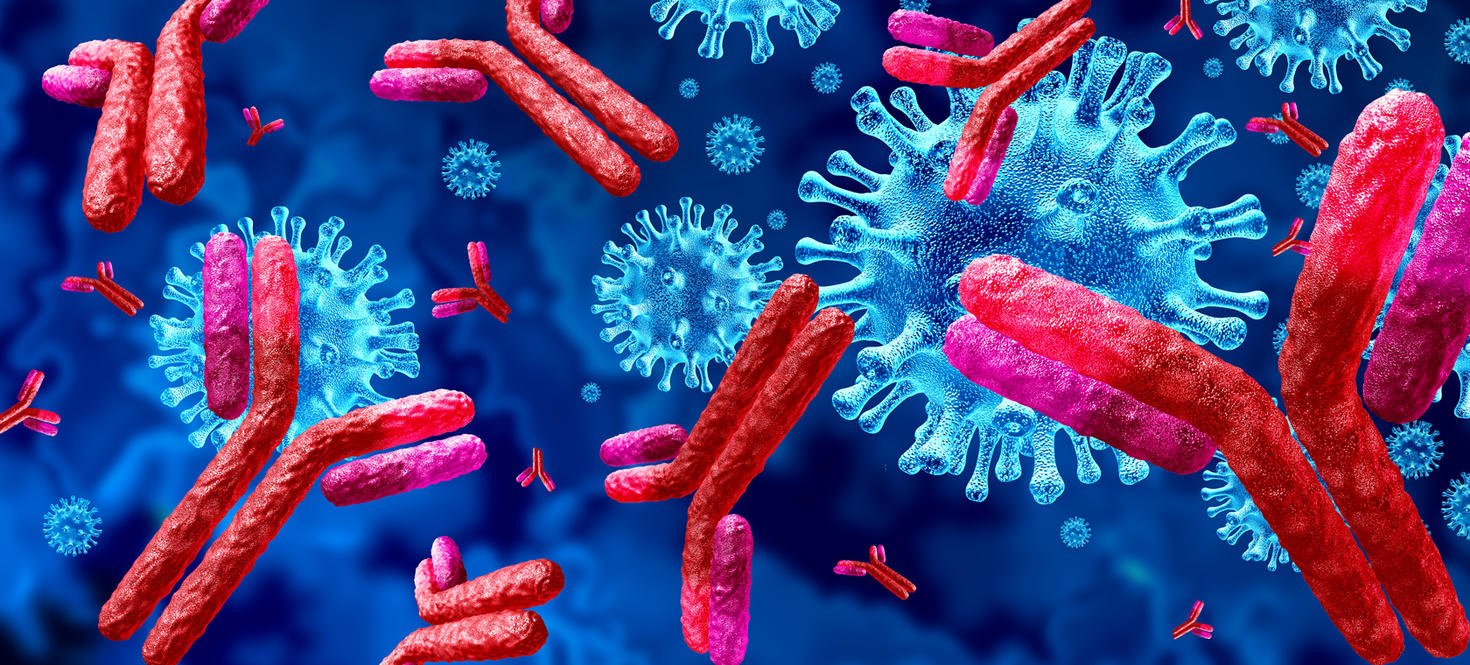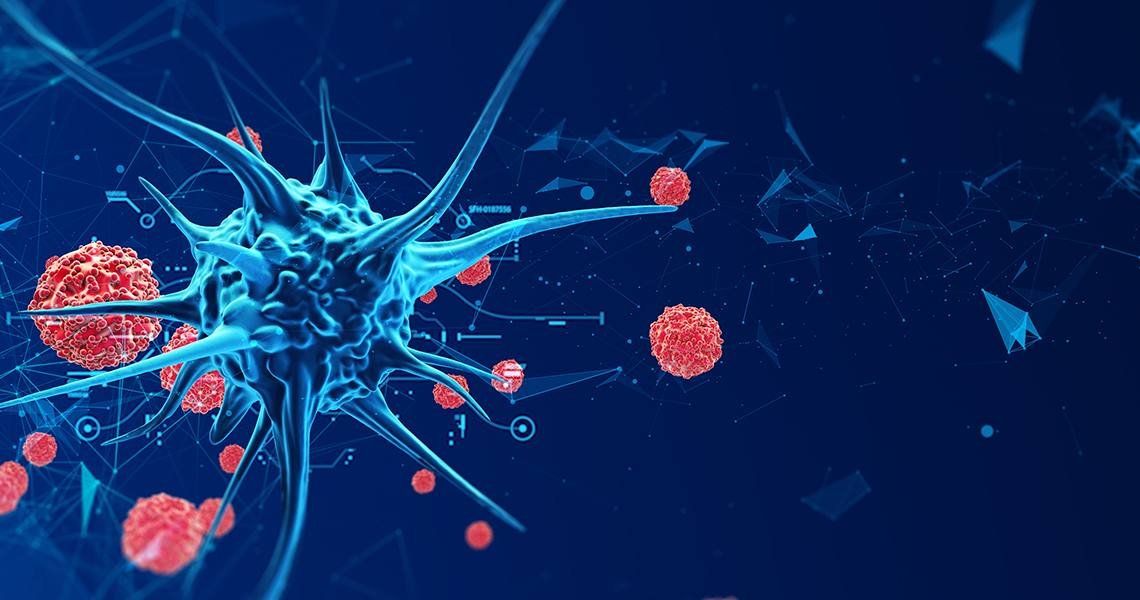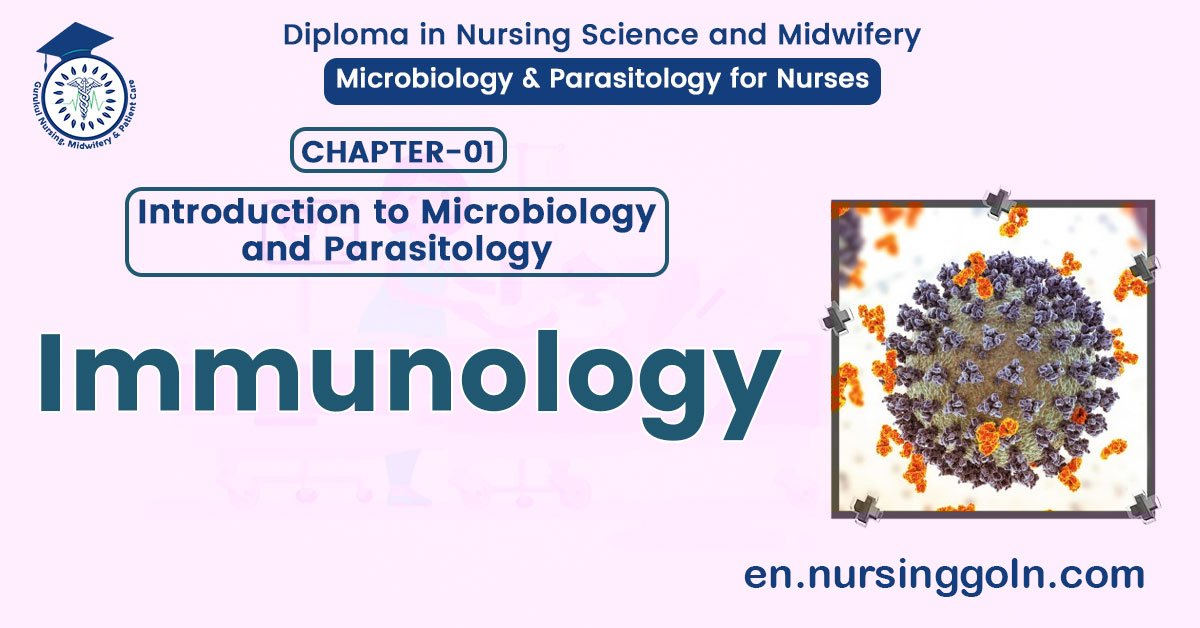Definition of Immunology – Basic microbiology, parasitology, and immunology; nature, reproduction, growth, and transmission of common microorganisms and parasites in Bangladesh; prevention including universal precaution and immunization, control, sterilization, and disinfection; and specimen collections and examination. Students will have an understanding of common organisms and parasites caused human diseases and acquire knowledge about the prevention and control of those organisms.
Definition of Immunology
The word Immunology is derived from the word ‘Immunis’ which is a Latin word meaning ‘free from burden’.
Immunology can be defined in many ways:
- The most simplified definition is “The branch of medical science which deals with immunity.”
- The comprehensive definition is “That branch of medical science which deals with the study of development and function of both cellular and humoral components of the immune system by which the body reacts to expel, destroy or neutralize foreign substances including pathogenic microorganisms.”

Application of Immunology in Medical Science:
1. Diagnosis of diseases: By detecting antibody or antigen, it helps in diagnosis of many diseases.
2. Understanding disease process: Immunology can explain in many occasions the pathogenesis of infectious, autoimmune, neoplastic and many other diseases which once were thought as diseases of unknown etiology.
3. Prevention and treatment of diseases: e.g. active & passive immunization by vaccines
& immunoglobulins against many diseases.
4. Blood transfusion serology: e.g. blood grouping, typing and cross-matching in blood transfusion.
5. Tissue typing and histocompatibility testing: Necessary for successful organ transplantation.
6. In forensic medicine: Paternity testing, stain identification (blood, semen etc.), meat testing.
Branches of Immunology:
1. Classical immunology: It studies the relationship between the body systems, pathogens and immunity.
2. Immunochemistry: Deals with the chemical nature of Antigen (Ag), Antibody (Ab) and their interactions.
3. Immunobiology: Related to biologic functions of the cells and tissue components of the immune system.
4. Immunogenetics: Deals with the study of immunoglobulin genes & the genetic basis of immune response.
5. Clinical immunology: Deals with pathogenesis, diagnosis & treatment of immune- mediated diseases.
6. Immunotherapy: Deals with prevention & treatment of diseases by immunological means, e.g. vaccination, immunoglobulin therapy, desensitization etc.
7. Immunohaematology: Deals with immunological basis involved in different. haematological disorders.
8. Intmunopharmacology: Deals with the pharmacological actions of different secreted molecules in immune responses.
9. Serology: Deals with the study of immune reactions mediated by antibodies or immunoglobulins present in the serum.
10. Reproductive immunology: Deals with the study of immunological aspects of the reproductive process including fetus acceptance

Definition of Immunity:
Recently, Immunity is defined as –
“All those physical mechanisms that endow the animal with the capacity to recognize materials as foreign to itself and to neutralize, eliminate or metabolize them.”
Classification of Immunity:
A. Innate (non-specific) immunity:
a) Genetic/Constitutional.
b) Mechanical:
- Keratin layer of skin.
- Intact mucous membrane.
- Mucocilliary movement.
- Reflexes, e.g. coughing reflex, sneezing reflex etc.
c) Humoral:
- Normal bacterial flora.
- Acid in gastric juice.
- Complement system.
- Interferons etc.
d) Cellular:
- Macrophage
- Eosinophil.
- Natural killer cells etc.
B. Acquired (specific) immunity:
a) Active: (Where antigens are exposed to the body)
- Natural: After clinical & sub-clinical infections, e.g. Hepatitis-A virus infection.
- Artificial: Different types of vaccines, e.g. bacterial vaccines, viral vaccines, toxoids, live attenuated vaccines etc,
b) Passive: (Where antigens are not exposed to the body)
- Natural:
✓ Transfer of maternal antibody to foetus through placenta.
✓ Transfer of antibody from mother to infants by breast milk.
- Artificial: Antisera & antitoxins, e.g. TIG (tetanus immunoglobulins), ATS (anti-tetanus serum), ADS (anti-diphtheria serum) etc.

Beneficial Effects of Immunity:
1. Prevention of many diseases by vaccination, e.g. measles vaccine, polio vaccine etc.
2. Following clinical & sub-clinical infections, there is production of immunoglobulins which gives protection to the host. The majority of the beneficial effects are unseen.
Harmful Effects of Immunity
1. Hypersensitivity conditions like asthma, rheumatic fever, glomerulonephritis etc.
2. Autoimmune diseases like rheumatoid arthritis, SLE (systemic lupus erythematosus), autoimmune haemolytic anaemia etc.
Self:
Any substance, which is recognized by body as its own constituent, is called self.
Non-self (Foreign):
Foreign means anything, which is recognized not as a body constituent. It may be a substance from outside, or in some cases body’s own structure (as in autoimmune diseases).
Primary and Secondary Immune Organs Along with their Functions:
| Type of immune organs | Organs | Function |
| 1. Primary (central) immune organs |
|
|
| 2. Secondary (peripheral) immune organs |
| These are the tissues where antigen is localized so that it can be effectively exposed to mature lymphocytes |
Herd Immunity:
It is the level of resistance of a community or group of people to a particular disease.
According to another source, herd immunity implies group protection beyond that afforded by the protection of immunized individuals. That is, it concerns the freedom from infection of individuals within a herd by sole virtue of the influence of the herd structure on the transmission among individuals.

Merits of Herd Immunity:
- Herd immunity provides an immunological barrier to the spread of disease in the human herd.
- If the herd immunity is sufficiently high, occurrence of an epidemic is highly unlikely.in
- If high level of immunity can be maintained, it may lead to elimination of the disease in due course e.g. diphtheria and poliomyelitis.
- The epidemic curve tends to decline with a buildup of herd immunity.
Read More….
